A man looks out across the Sound of Kilbrannan. His body is made of multifaceted lumps of cast iron, each connecting to the next with hidden working. Smooth sides of matter take the place of his eyes. He is turned to the water but he can’t see it.
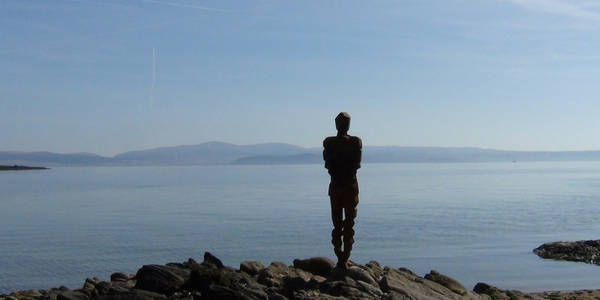
At Saddell Bay not everything is as it seems. The figure is GRIP, one of five temporary sculptures conceived by the artist Antony Gormley for Landmark's 50th anniversary and brought to the west of Scotland in 2015. Earlier this year, an anonymous donation allowed the sculpture to remain. The rest were removed and returned to Gormley.
The one Scotland kept is a master of plurality. Its role runs deeper than simple shore treasure. It is a custodian, a gatekeeper between land and sea, and a representation of what can survive if the composition and conditions are right.
Out here, on Scotland’s most westerly fringes, the differences between the built and natural worlds were never clearer. This is not the coastline of VisitScotland adverts: the sand is coarse, dark; strata steep and slippery with horizontal grooves. Things live in the gaps. All lines point towards Cul na Shee, our base for the weekend.
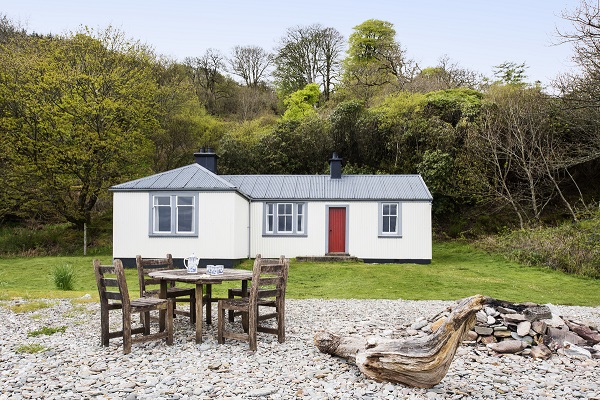
Cul na Shee at Saddell Bay
In 1978 The Landmark Trust purchased the first of six properties on the Saddell Estate in a bid to save them from dereliction. Cul na Shee, the smallest, started life in the 1920s as a retirement home for an Argyll school teacher.
On acquisition, the Landmark Trust added a working bathroom, spruced the corrugated tin cladding and upgraded the inside space. Its kitchen may now contain a refrigerator, its bedrooms' plug points, but the crux of the space – uninterrupted views over the water – remains unchanged.
We arrive with plans. To work, to read novels, to explore the Kintyre Peninsula. By late afternoon on our first day we wonder if we are getting ill. Our energy is sapped. We realise, later, that this is a rare kind of drowsiness: how it feels to be properly relaxed. Out of the city the body resets to slow.
Novels are left in bags. Notepads lie unopened on the dresser. Instead we begin by combing GRIP's beach for finds. We pick coastal flowers where they are plentiful, take buckthorn stems, oxeye daisies and cow parsley back to Cul na Shee and arrange them in glass tumblers according to height.
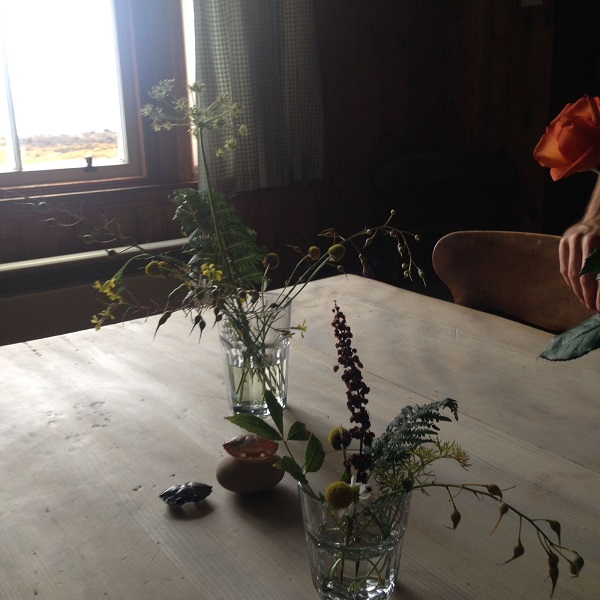
A lapidary selection of books lives in the cottage's front room. We absorb a basic education on Scottish buildings, discover where in the world iron structures are most common, learn how the industrial revolution began. The white gull with black tipped wings we saw dive bombing for fish is identified with the help of Argyll Birds and How to Spot Them. Through a process of elimination it is whittled down to a gannet.
During mealtimes we sit at the kitchen table staring out at the water in silence. We have become wide eyed ghosts, floating around Cul na Shee like guests before us. At evening time, just before dark, any daytime softness is washed out of the view. Rocks around the bay turn sable and jagged, stitched around the water’s edge like a hairline. Around the fire we make up facts to explain how the things around us came to be here, try to make order of the space around us. After midnight the bedroom takes on a cosmic darkness. Ghost stories resurface before sleep.
The hours of nothingness give way for bursts of activity. An hour south of the Saddell Estate is the Mull of Kintyre lighthouse, perched on the peninsula’s southern tip at the end of a four kilometre walk cut into the headland. It takes just over an hour to walk down to the lighthouse but the ascent is longer. A tarmac road belies the route’s arduousness; we see our lives flash before our eyes as an enormous ram approaches us with gusto. It is an ideal way to burn off too many caramel wafer bars.
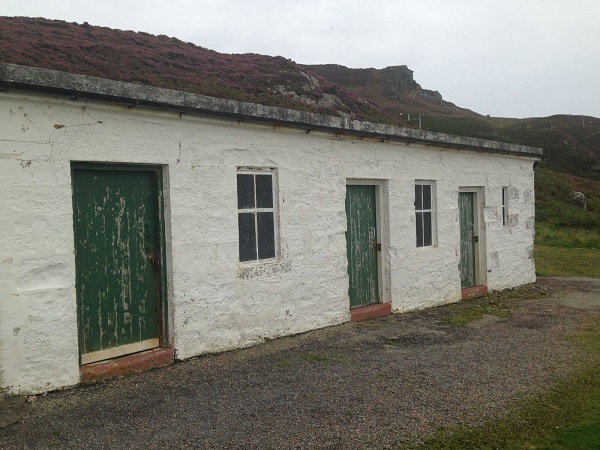
The Mull of Kintyre lighthouse cottage, with its faux painted windows
Davaar, one of 17 tidal islands that can be reached by foot in Scotland, is 20 miles north from the Mull of Kintyre lighthouse. There is a swathe of sand connecting it to the land but we pick out a route of our own through collections of razor clams and around empty mussel shells. We stone-hop to reach one of the island’s seven caves that features a painting of the crucifixion which has survived more than 100 years. These days lumps of granite with painted football slogans sit beneath it. Modern day religious iconography.
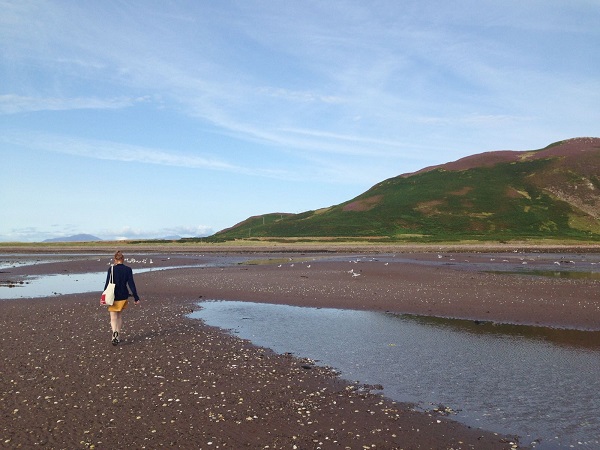
On the Island of Davar
Back at Saddell Bay we swim in August seas under the gaze of GRIP. Entering the water is punishment but those who can bear it long enough are rewarded. From the shore the sea appears abstract but in it we become aware of the limits to which we extend, of the relationship between us and the water.
At first, winded, we worry this could be the end. But it's the beginning of a deeper understanding that wildness can be an artist's iron man, ragged nails, hair that smells like bonfires, a dead mobile phone, a body heavy with quiet. At Cul na Shee all these things are given temporary life. Whether they become permanent is our choice.
Gabriella Bennett is a writer and journalist at The Times. You can find her website here or on twitter here